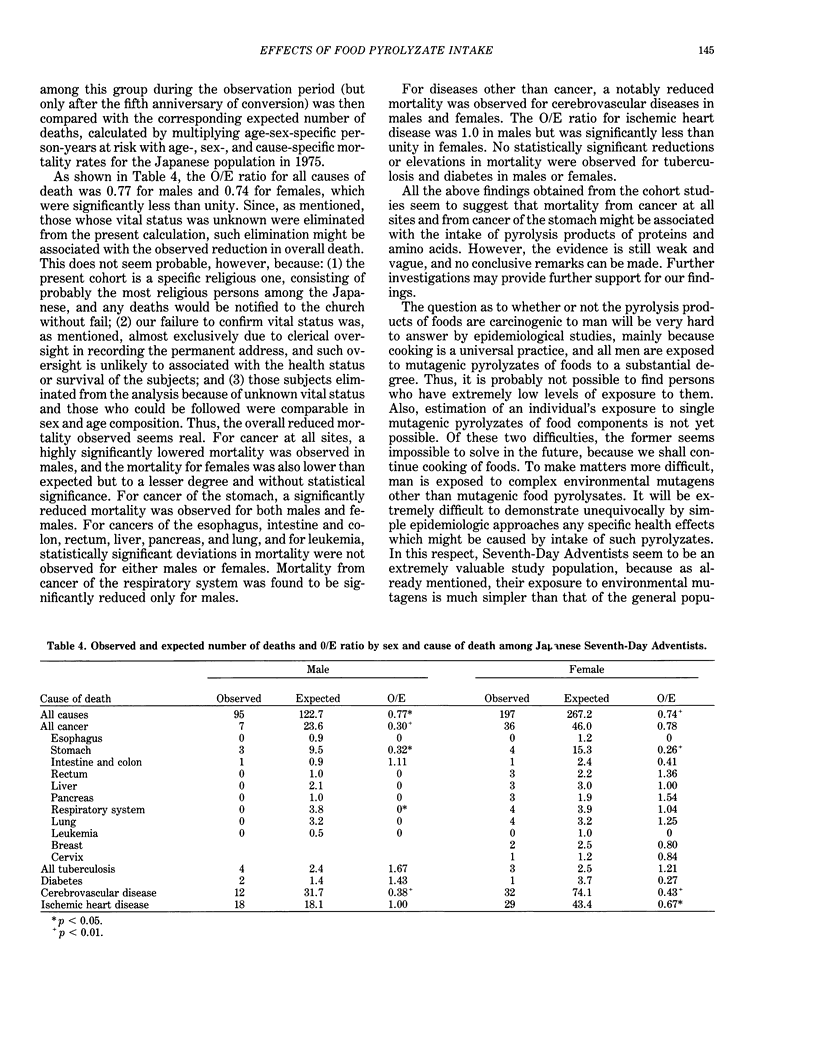Abstract
To elucidate the effect of intake of mutagenic and/or carcinogenic pyrolysis products of proteins and amino acids on carcinogenesis in man, we have undertaken two epidemiologic cohort studies: one concerning the possible association of broiled fish consumption with cancer and the other concerning the cancer mortality among Japanese Seventh-Day Adventists. The main findings of these studies are described.
Full text
PDF



Selected References
These references are in PubMed. This may not be the complete list of references from this article.
- Haenszel W., Kurihara M., Segi M., Lee R. K. Stomach cancer among Japanese in Hawaii. J Natl Cancer Inst. 1972 Oct;49(4):969–988. [PubMed] [Google Scholar]
- Ikeda M., Yoshimoto K., Yoshimura T., Kono S., Kato H., Kuratsune M. A cohort study on the possible association between broiled fish intake and cancer. Gan. 1983 Oct;74(5):640–648. [PubMed] [Google Scholar]
- MANTEL N., HAENSZEL W. Statistical aspects of the analysis of data from retrospective studies of disease. J Natl Cancer Inst. 1959 Apr;22(4):719–748. [PubMed] [Google Scholar]
- Phillips R. L., Garfinkel L., Kuzma J. W., Beeson W. L., Lotz T., Brin B. Mortality among California Seventh-Day Adventists for selected cancer sites. J Natl Cancer Inst. 1980 Nov;65(5):1097–1107. [PubMed] [Google Scholar]
- Phillips R. L. Role of life-style and dietary habits in risk of cancer among seventh-day adventists. Cancer Res. 1975 Nov;35(11 Pt 2):3513–3522. [PubMed] [Google Scholar]
- Sugimura T., Sato S. Mutagens-carcinogens in foods. Cancer Res. 1983 May;43(5 Suppl):2415s–2421s. [PubMed] [Google Scholar]


